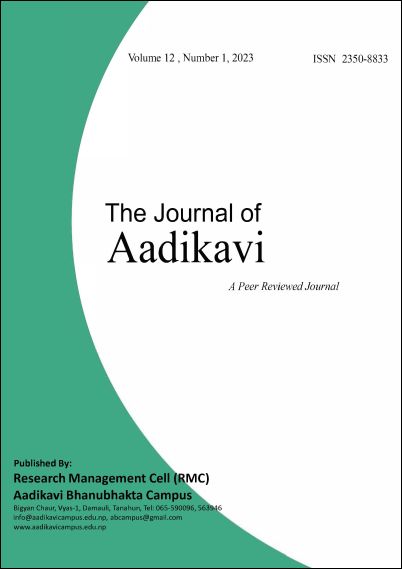Effectiveness of ICT for Secondary Education System in Vyas Municipality Ward No-1 of Nepal
DOI:
https://doi.org/10.3126/joaa.v12i1.65814Keywords:
ICT, smart classroom, education, traditional, learningAbstract
ICT education in Nepal encounters obstacles that impede its effective implementation and widespread adoption. Insufficient infrastructure, including reliable internet connectivity, electricity, and hardware, poses a significant challenge to providing comprehensive ICT education countrywide. Additionally, a considerable digital divide exists between urban and rural areas, leading to disparities in access to ICT tools and technology. The research aims to explore the effectiveness of ICT in enhancing Nepal’s secondary education system, assessing its impact and benefits. It seeks to understand how ICT can improve various aspects of secondary education, ultimately enhancing the overall quality and efficiency of the educational process. Questionnaires and group discussion are the main tools of this research. Mixed method used in this research. The majority of participants considered ICT’s effectiveness as “Sufficient”, indicating a significant positive impact on the secondary education system. Additionally, 33% rated it as “Normal” suggesting an average impact. 8% perceived it as “Satisfactory”, indicating a modestly positive perception. However, 21% rated it as “Insufficient” indicating room for improvement. This analysis reveals that while many participants view ICT positively, a considerable proportion sees scope for enhancement. Overall, this study provides insights into the perception of ICT’s effectiveness in enhancing secondary education in Nepal, with most participants viewing it positively, through some believe improvements are needed.




